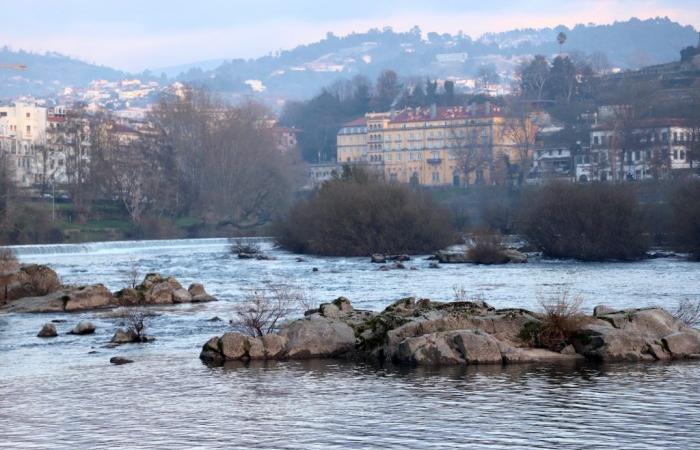Approved unanimously in the plenary session of the Municipal Assembly last February, the Amarante Municipal Tourist Tax is now classified as “absurd” and “untimely”, in addition to being applied at an inappropriate time, when the local council “is provide a bad service to tourists” and does not even have an updated map of the city to offer those who visit.
Amarante has had the “Municipal Tourist Tax” in force since the 11th, the values of which are €2/night, in the period between April 1st and September 30th; and €1/night, between October 1st and March 31st.
Despite having a period of public discussion before being approved by the Municipal Assembly at the end of February, the effective perception of the existence of that fee and its possible implications occurred when the Municipality informed tour operators (hotels and local accommodation units) ) of the need to register their equipment on the local authority’s platform for “communication of tourist tax”.
And the reactions were diverse. Firstly by local accommodation units located in rural or mountain areas of the municipality, which contest the amounts to be charged, as they understand that they could reduce demand.
This understanding is shared by, among other tourist promoters, Eduarda Miranda, owner of “Casa do Mel”, in Ansiães, in the Serra do Marão, who even addressed a request for “creation of an exemption regime” (see text here) of the tourist tax.
“The parish of Ansiães, municipality of Amarante, is a low-density parish populational. In it exist just one establishment in Accommodation Local, with The capacity to offer total accommodation for six / eight people. It is not a destination with tourist and urban planning pressure that justifies being subject to the application of a tourist tax to compensate for the greater burden of municipal expenditure and investment due to the tourist movement, such as the recovery of heritage, the opening of new centers of tourist interest, the reinforcement of urban cleaning and hygiene”explains Eduarda Mirando in the letter she sent to José Luís Gaspar, president of the City Council.
In support of her petition, Eduarda Miranda argues, for example, with the lack of public sanitation in Ansiães, or with the “deficient garbage collection carried out there by the Municipality services, especially in the summer months, when the village is filled with emigrants”.
Also against the tourist tax are Maria da Glória Pereira, owner of Casa da Nogueira, in Canadelo, and Joaquina Matos, from the same parish, who transformed Casa do Engenho into local accommodation.
On the horizon of these promoters will be the creation of “positive discrimination”, which exempts local accommodation units located in areas of low population density from charging the municipal tourist tax to their guests, an objective that a municipal source told AMARANTE MAGAZINE (AM) does not be equationable.
And the truth is that, curiously, point 1 of the Regulation that creates the “Amarante Municipal Tourist Tax” appears to exclude rural areas of the municipality from its payment. Pay attention to its formulation, which twice refers to the city (and only the city), without ever alluding to rural or mountain parishes…
Here is your essay: “The Municipal Tourist Tax provided for in this Regulation is due, in return for the singular fruiçion of a set of activities and investments promoted by the Municipality of Amarante, related to tourist activity, namely: through improvement and preservatioņenvironmental CITY; safeguarding traditional, historic and local commerce; of improvement works in the municipal public and private domain and in excellent tourist areaŝnce or those that become short-term; of the benefit generated by the provisioņof informatioņtion and support for tourists or service userştourism and also by creatioņof dynamization poleşcultural and recreational activities, spread throughout the CITY.
According to the values defined for the tourist tax, a family of, for example, 8 people staying in an accommodation unit will pay, after three nights, 48.00 euros in addition to the reservation values.
“Municipality provides bad services to tourists”
However, not all local accommodation developers in low population density areas of the municipality are against the application of the tourist tax. Paulo Amado, owner of Quinta de Pousadela, in Olo, defends its existence, saying that “The tourist is the one who pays”, and not the accommodation unit. And concluded that “whoever defends non-payment should not be granted any public benefits”although your enterprise is not, for example, served by public water supply or sanitation.
Pedro Catão, who has the local accommodation “Sítio dos Cogumelos” in the parish of Candemil, downplayed, when questioned by AM, the impact that the tourist tax may have on demand, so he does not see the need to create any positive discrimination for the areas of municipal territory with low population density.
On another level, a well-known tourist services operator in Amarante considers “untimely and meaningless” the creation, in the current context, of a tourist tax, considering that the Municipality is providing a bad service to tourists.
“The Chamber has not carried out any tourist promotion actions for many months and has given up receiving and providing support to those visiting the city”, Therefore, it makes no sense to claim that the rate is also based on the “benefit generated by the provision of information and support to tourists or users of tourist services”, refers.
In fact, a municipal source confirmed to AM, the Municipality of Amarante no longer has specialized assistance for tourists, allegedly “due to lack of human resources”.
After the closure, at the end of last year, of the Interactive Tourism Store, in Largo Conselheiro António Cândido, tourists are now “directed” to the Amadeo de Sousa Cardoso Municipal Museum store, where there is no one with tourism training to serve them. There isn’t even an updated map of the city to offer those who visit, a municipal official admitted to AM!
But, regardless of whether or not there is agreement with the implementation of the Municipal Tourism Tax, the timing of its implementation also deserves criticism.
AM had access to the content of an email from a tour operator in Amarante, addressed to the Municipality, in which it is disputed “the temporal gap between the communication of the obligation(from fee collection) and its implementation (…). Wouldn’t it make more sense for the tax to come into force at the beginning of a calendar year, in the low season?, questions. This would give operators time and agility to implement it, rather than at the edge of summer and with the end of April expected to see intense activity, as a result of the holiday.(from April 25th) and the rally(Terras D’Aboboreira)”.
In that communication, the promoter takes the opportunity to note that he considers “the implementation of the tourist tax is a measure completely inappropriate to the reality of tourism in Amarante. Occupancy for Amarante for next Saturday (it’s April, with good weather) is 22%. I expect it to rise a little, but I don’t think it will go beyond 30%. The average annual occupancy rate in Amarante is just over 40%. The majority of tourism in our city is made up of day-trippers who do not pay tourist tax”,underlines.
In conclusion, that prosecutor questions “If the approval of this measure(fee implementation) it was no more a promotion strategy than a necessity”.
The proposal for the creation of the municipal tourism tax in Amarante was made in the current municipal Executive (PSD) by those elected from the Socialist Party, who, according to Hugo Carvalho, President of the local Council, “the assumption was the distribution of revenue across parishes”.
When asked by AMARANTE MAGAZINE whether this distribution would be based on some index (population, number of voters or others, etc.), the person responsible said that this methodology was not defined from the outset. “because the PS did not want to interfere in the negotiations that the Parish Council Presidents will have with the municipal Executive”.
Regarding the creation of positive discrimination aimed at exempting tourist tax from charging local accommodation units located in low population density areas, Hugo Carvalho admitted this possibility, considering it to be “It is always possible to improve the Regulations”.
AM also contacted Presidents of Parish Councils in rural and mountain areas to question them about charging the tourist tax in their territory. Of those who answered the phone, the majority seemed uncomfortable with the situation, realizing that, today, they would vote differently on the proposal to create the tourist tax, approved unanimously in February in the plenary of the Municipal Assembly, but not wanted to be identified.
António Brandão, President of the Parish Council of Ansiães, had a different position. He regretted “having gone along with the wave” and considered the municipal tourist tax as “absurd”.
“I have no problem admitting that, today, my vote would be different”he said.






